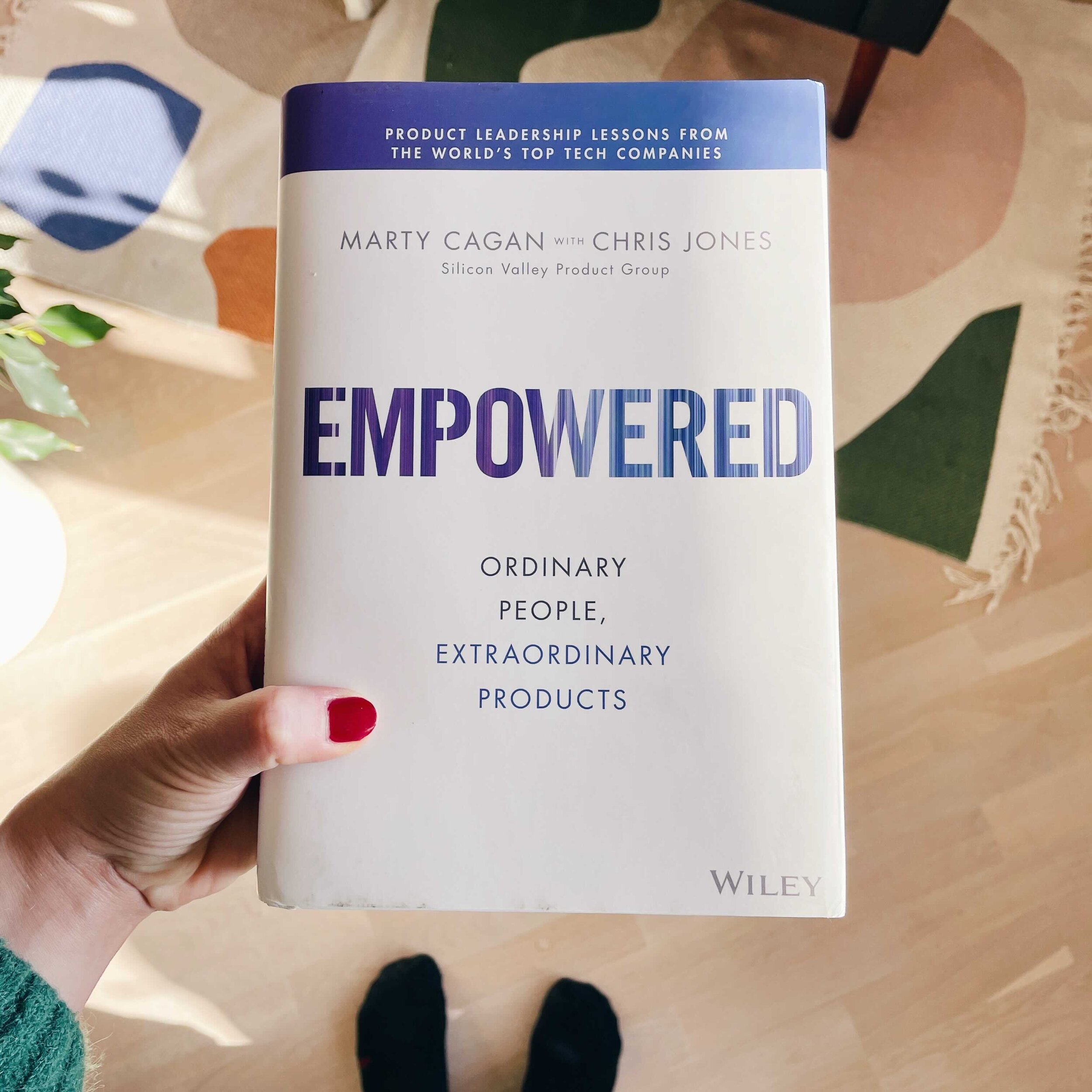My main takeaways from Empowered
Inspired was one of the first books about product management that I read, quite some time ago, since then I always followed Marty Cagan and his writing on the svpg blog. Therefore I was super excited when Marty, together with Chris Jones, published his second book, Empowered, targeting product leaders.
After much anticipation, including waiting for Amazon to ship the physical book to Sweden I was able to do a deep-dive into the 400 pages, where Marty Cagan and Chris Jones describe how leaders of truly empowered product organizations should think and act, taking examples from the best product companies in the world.
What I found refreshing is the hands-on approach of the book, full of practical tips and reflection points. Definitely, a must-read for any product leader who wants to reflect upon ways of working and best practices. But be aware, impostor syndrome might really wait for you, page after page.
After reading and reflecting, here are the main points I take with me:
”Ordinary people, extraordinary products”
The tagline of the book says it all, product teams are the real strength of a product organization. Marty and Chris make the point yet again that the most important thing in product development is to enable different individuals with really specific skills to work together and find solutions to meaningful problems in a way that works for the business. It is about creating ownership, autonomy, and alignment in the teams so that they know exactly in which direction the product strategy is taking them.
It was very comforting to know that some of the most successful product organizations in the world do not flourish because they have hired all the most brilliant people on the planet, but because they perfected the way they work together. From defining a strategy to daring to focus and lead with context and not control, trusting that the product team will find the best solution to solve a customer problem in a way that works for the business.
Debunking the myth of empowered teams having the right to set directions.
I think that one of the common misconceptions that Inspired generated is that, for a team to be empowered, it needs to have the freedom to decide on what to work on and take on itself strategic company decisions. I have seen this argument taken up over and over again by different product teams: we are not a feature factory, we need to decide ourselves on what to work on. Why weren’t we involved in this decision from the beginning? And so on.
Maybe Marty and Chris have encountered the same misconception generated by Inspired, because in this book they really clarify that an empowered team does not equal a team that decides on a company direction, a focus for a quarter or a company bet to take. That is an executive decision that the team needs to trust as much as the executives need to trust the team to know how to solve the challenge or get to the goal.
Empowered teams should in their turn feed those decisions with consumer knowledge, understand the direction that the company is taking, own a problem/opportunity and find solutions to that, create products that solve customers’ problems in a way that works for the business.
Empowering teams have full decisional power over the problem/opportunity they are assigned, not on identifying the opportunity itself.
Define the improvement you want to bring in your customers’ lives and make that your north start guiding your decisions.
Marty calls defining the good you bring into your customer lives through your product a ”product vision”.
And setting the product vision is one of the most important tasks of a product leader. It is about understanding which problems or opportunities are there and work best for the business, make them inspiring and then spend all your efforts to get there. Having a vision means daring to choose, say no, and stay true to the final goal.
I found this idea of thinking about a vision in terms of a ”positive impact on a customer life” really inspiring as well as really easy to apply in day-to-day product life.
Empowered teams do not need less leadership but better leadership. And live up to those expectations is daunting.
This is really the focal point of the entire book: all the skills that a leader of an empowered organization should have.
The leader should be a coach providing context to the product teams, identifying strengths, growing her people, and help them in their development. The leader should also be an expert of the industry and an evangelist, able to identify the most important customer problems to solve, create a vision, communicate it to the organization, make sure that everyone is always focused on it by giving strategic context.
You should identify the best direction and set it, be present, give context, optimize for the whole and lead with context, coaching skills, inspiration, and empathy.
This description of product leader sounds both fantastic and daunting to me. Reading Marty’s words made me really feel inadequate and question myself sometimes. Will I be ever able to live up to all these expectations? Will I ever be inspiring enough to lead an entire organization, focused enough to both work on strategy and grow my own PMs, present enough to give context whenever is needed?
As much as Empowered is a truly great source of amazing tips about product leadership, I also think that it puts enormous pressure on product leaders, presenting a picture of perfection that feels almost impossible to achieve. To not get overwhelmed and paralyzed by impostor syndrome, I decided to focus on one area at a time, using that perfect picture of a product leader as something to strive for and not get intimidated by. But I would love to hear other product leaders' take on this extreme pressure.
